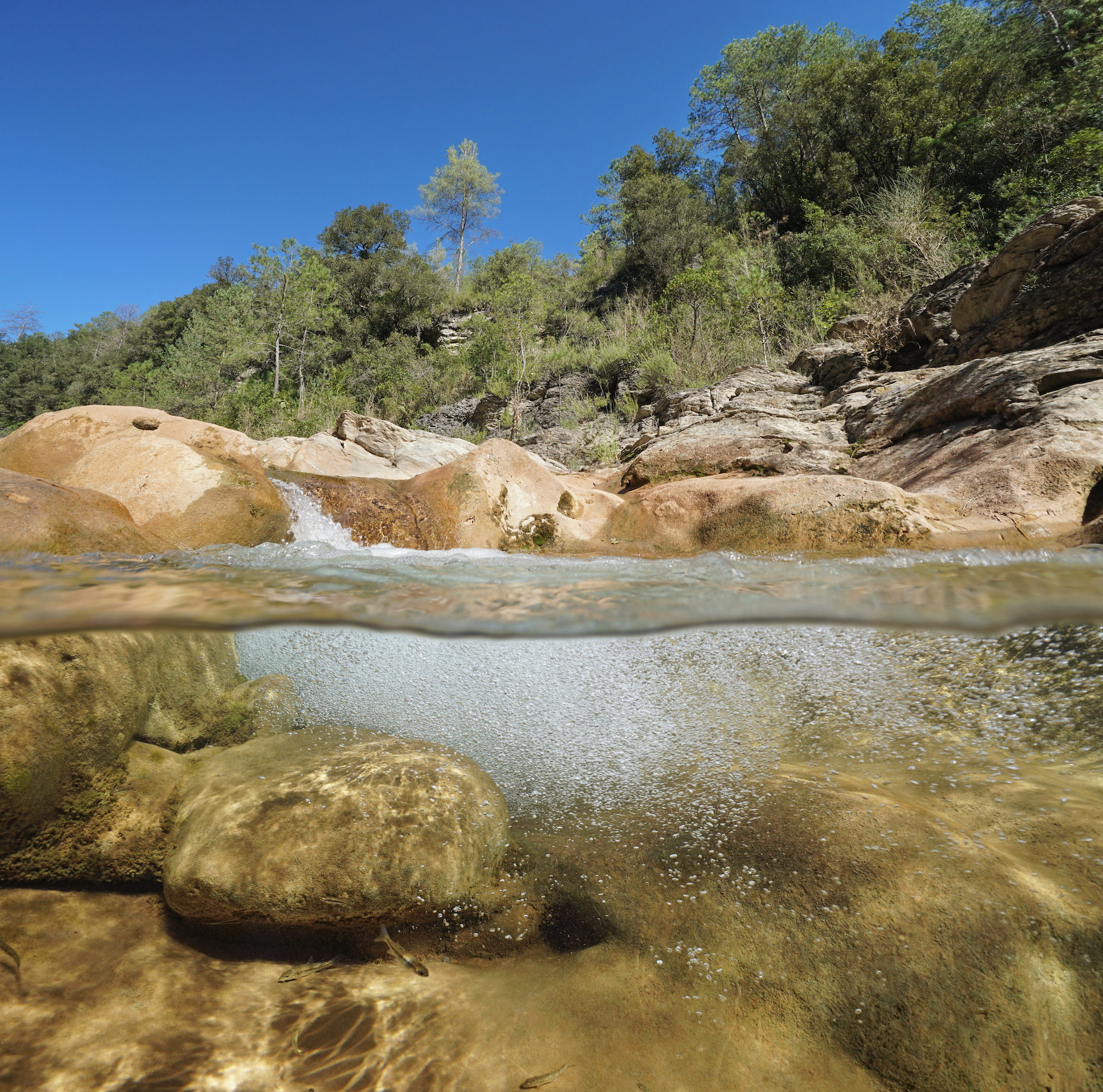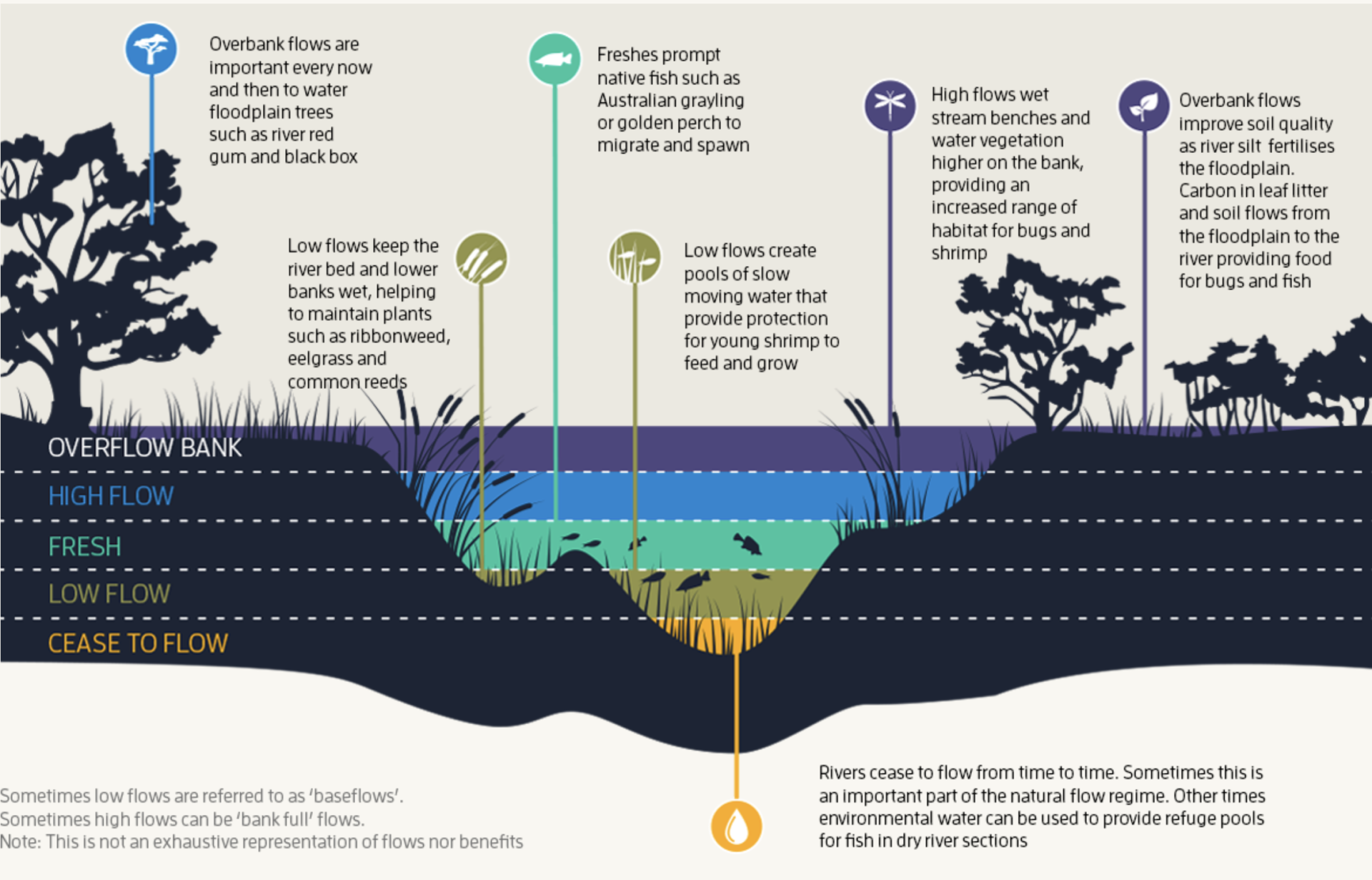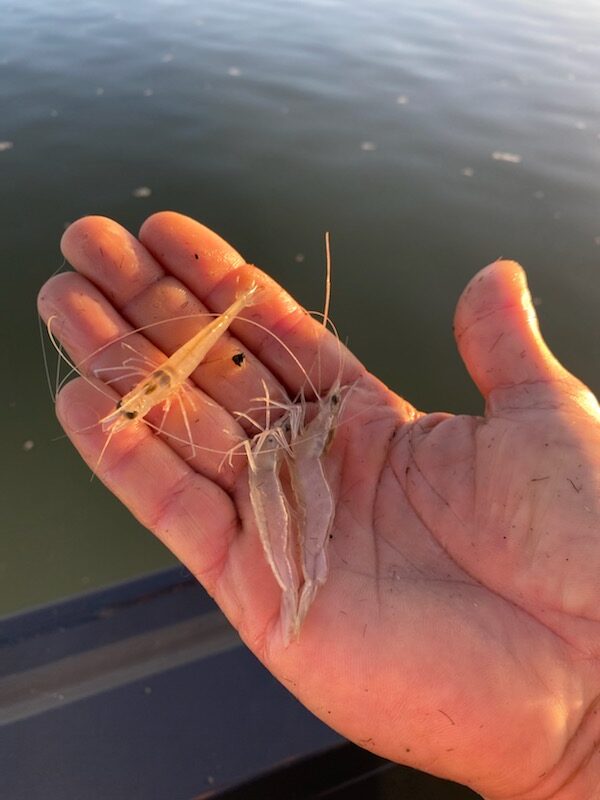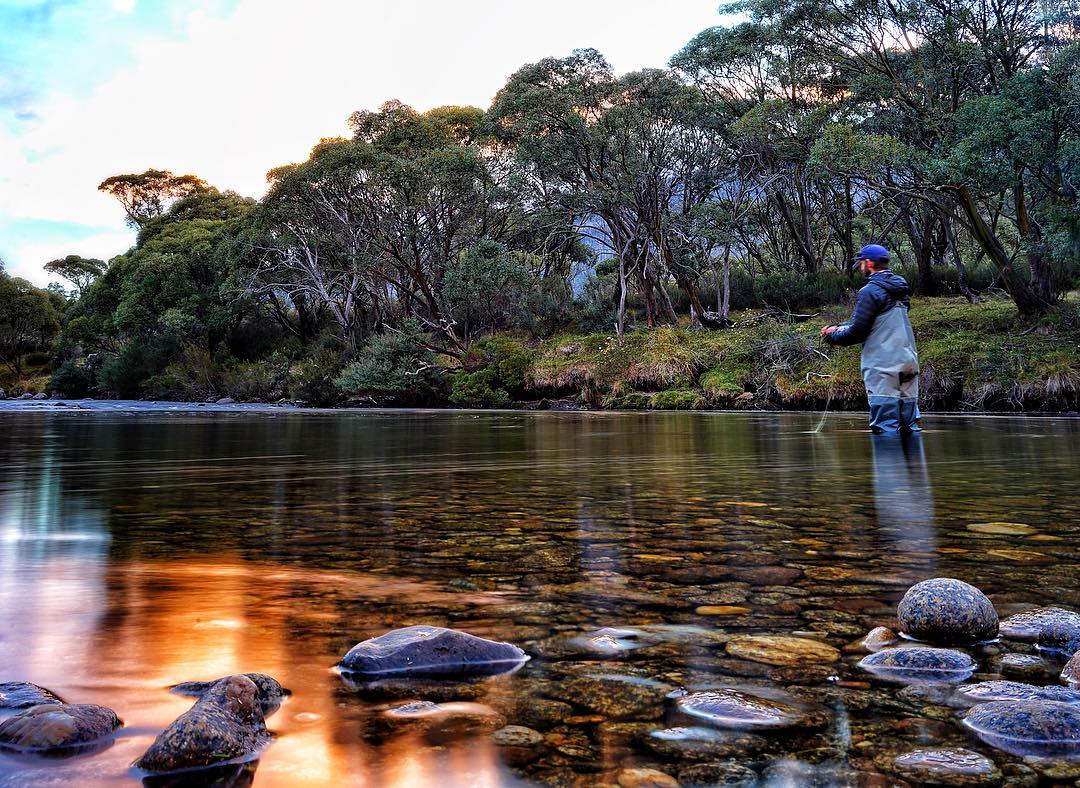Unpack Habitat – Flow

As part of the Growing River Stewardship program OzFish, supported by the NSW Government’s Environmental Trust, are unpacking habitat in an eight-part series in which we explore key fish habitat. To wrap up the series this week, we are looking at river flows in freshwater areas of Australia.
What do you mean by flow?
When we talk about river flow, we are talking about the water in or flowing through our river systems.
Australia’s rivers and creeks are generally characterised by low and variable flow. If you think about our weather patterns of flood and drought, Australia often experiences long dry spells with little or no rainfall, punctuated by flooding. Our rivers and everything in them have adapted to their own unique wetting, drying and flow cycles.
Check out this diagram which shows common flow patterns and how each type of flow has an important role to play in environmental health.
Photo Credit: Victorian Environmental Water Holder (https://www.vewh.vic.gov.au/water-for-the-environment/environmental-benefits#:~:text=These%20flows%20can%20move%20sediment,supports%20native%20plants%20and%20animals)
You might have heard of the terms ‘natural flow’ and ‘regulated flow’. Natural flows include rainfall-runoff, snowmelt and groundwater. Regulated flows are releases from dams for towns, farms and the environment.
Do fish care about flow?
You bet they do. Flows are important to trigger breeding, supplying food, and allowing fish passage through a river system. Natural flow patterns mean more fish.
Fish not only care about flow, they require flow for all stages of their life cycles. Let’s break it down into stages, the first being eggs. Some species lay their eggs in nests and flow helps protect the nests and keeps up oxygen supply. Other species need flows to disperse their eggs to increase the chances of fertilisation or success of fish in larval stages. Next in the larval stage, once the eggs have hatched, the larvae drift in the flow toward food sources and safe habitats where the water eddies and they can settle in. Juvenile fish use flow to find new areas to populate, find safety, food and shelter. And lastly, adult fish use flow to travel, find a mate, feed, return to or seek better habitat.
It’s important to note that different species have different flow preferences and those preferences may change throughout a fish’s life cycle. We can put them in to four broad categories; flow pulse specialists; generalists (all-rounders); in-channel specialists; and floodplain specialists.
Photo credit: Reel Action Tv
What has happened to flow since colonization?
For thousands of years our native fish have adapted to thrive in Australian river flow conditions. But, over the past 200 years, we have altered many of our wetlands and rivers to provide water for agriculture, industry, cities and towns. The amount of water in our river systems has been significantly reduced, and the natural patterns of flow and frequency have also been dramatically altered. These modifications have meant that some of our waterways are not able to function as they would naturally. The way these systems flow and connect rivers and wetlands has been drastically changed from what our fish are used to.
Many of our native species rely on environmental cues to trigger their spawning and migration. Often these signals are changes in water level, flow, temperature, velocity, and salinity. As you can imagine, if these cues are no longer present, native fish don’t receive these fundamental messages for their life cycle and they simply don’t find a mate, don’t breed or don’t find the food they need to thrive.
And it’s not only flow cues that native fish rely on, they also need easy passage both downstream and upstream for different parts of their lifecycles. More than half of our native freshwater species need to migrate at least once as part of their lifecycle. If the system is fragmented or blocked by infrastructure like dams or weirs, migration is nigh impossible.
Overall, there is a lot less water in our systems owing to factors including our changing climate and associated weather patterns, over-use, and infrastructure. This lack of water in the system can lead to a change in geomorphology which basically means a change in the shape of the river. Less water and more erosion, means more sediment deposition, which can lead to the in-filling of river channels with the water then flowing out across the floodplain.
At the end of the day, it’s pretty simple, our fish need water and flow.
How to use flow to fish?
Most of the species found in Australian waters, particularly our natives, are what we call ambush predators. This means that instead of exhausting valuable energy swimming around the rivers and creeks chasing prey, they patiently wait in a nearby snag or back ‘eddie’ until the prey comes to them. Most often or not, this snag will sit just off the line of current or flow found in a system, which will act as a direct highway for smaller fish, like mullet or herring, to cross the predator’s path. It is the role of recreational fisherman to seek out these advantage points and focus their casts in and around these holding areas.
Photo Credit: Reel Action Tv
If you are looking for a back ‘eddy’, you want to focus your attention on either the floating bubbles that are moving in an opposite direction to the natural water progression, or the leaves and debris that is sitting on the water’s surface. These are clear signs that the water in this area is being protected by a nearby log, rock or bend in the river, and will create a small quiet zone where there is little flow or movement. As the light fades, don’t hesitate to through a surface lure in these areas.
If you are looking for snags to fish, look for the trees, logs or root systems that run parallel to the water’s surface, as opposed to perpendicular. These will often protrude further out into the flow of the river and allow more protection and coverage for a predating bass or Murray cod to pounce on passing fish.
Photo Credit: Reel Action Tv
If you are lucky to hook a fish lurking in these areas, then be sure to back your drag off and fish with what we call light hands. This means using the bend in the rock to soak up the headshakes and lunges of the fish, without pulling back to hard. When fighting a fish in fast flowing water, they can use their body shape to create more resistance. Bass, for example, will turn side on and try to use the drag on their body from the water to snap the line. Don’t panic, take your time, and direct the fish to calm water.
Matt Tripet casting a fly rod in a flowing river
Fast flowing water is also a factor to consider when choosing your lure or soft plastic. Whilst you might usually run a 1/12 Oz jighead when chasing bass in impoundments or slow following water, such a light lure will get swept away if you start fishing in rapid-like sections. Keep note, that the faster the water is flowing, the heavier you have to fish. Spinner baits and vibes are a great starting point for our premier native sport fish.
What can OzFishers do?
There are loads of things you can do with OzFish to help our native freshwater fish. These include waterway mapping, planting days, resnagging, promoting fish passage, installing fish screens and clean-up days just to name a few. Let’s all work together to shore up the future of the sport we love.
Remember better habitat, better fishing!






